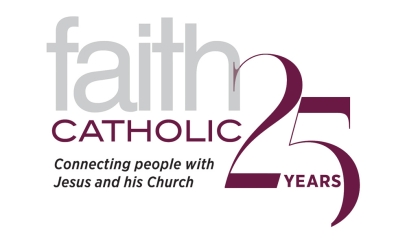What I learned from the ‘man who spoke in pictures’
During my first two years in seminary I had the opportunity to get to know a truly unique man. His name was Richard, and I will always think of him as “The man who spoke in pictures.”
Like any seminarian, I was required to spend time in what is called field education – practical, real-world experience in putting to good use the pastoral and theological skills learned in the classroom.
I spent my first two years of field education working at the county-run nursing home near the seminary. At its beginning, the nursing home was originally known as the county “poor farm.” This was the place where the poor or indigent, many of them elderly, lived out their last years. Slowly, the facility grew and was transformed into what we would now call a nursing home. It was a place that had both long- and short-term residents. The short-term residents were often receiving valuable physical and occupational rehabilitation following a stroke, an accident or other life-threatening illness or injury. The long-term residents were the elderly poor or people with a variety of physical or mental difficulties who either had no family to care for them or who were unable to care for themselves. Richard fell into this latter category. At the time I met him, he was in his early 50s and had profound cerebral palsy from birth.
Richard spent his days in a specially-built wheelchair that gave him the ability to rest near the expansive windows adjacent to his room. This was Richard’s favorite place in the house and he loved to spend hours there soaking up the gentle sunlight and watching the beauty of nature. Because of the severity of his cerebral palsy, the only sounds Richard could make were loud “ooohs” and “aaaahs.” When something was funny, Richard’s loud, childlike laugh would resound in the hallway. Although his ability to verbalize was very limited, Richard had no difficulty communicating with visitors and caretakers.
Someone had discovered that Richard could point to simple pictures, which he understood, and using them, he could slowly construct sentences that evolved into very long and beautiful conversations. Using a picture board that rested in his lap, Richard slowly and reliably pointed to pictures that represented feelings like “happy” or “sad” and items like “food” and “water.” Richard used about 50 different pictures to conduct his conversations. As a visitor, I watched Richard point to pictures one at a time. As Richard pointed, I sounded each one out, offering different options based on the context of our conversation. In time, and with some practice on my part, Richard and I could have long “talks” about almost anything. Richard would end each visit with the same declaration: “God loves Richard, and Richard loves God.”
I will always treasure those weekly visits with Richard. He taught me that all of us have beautiful things to say; some of us just take a little longer to do so than others. He also taught me the value of patience and careful listening. Richard taught me about the dignity and beauty of human life and God’s profound love, using pictures rather than spoken words.
And so, our journey in FAITH continues.



